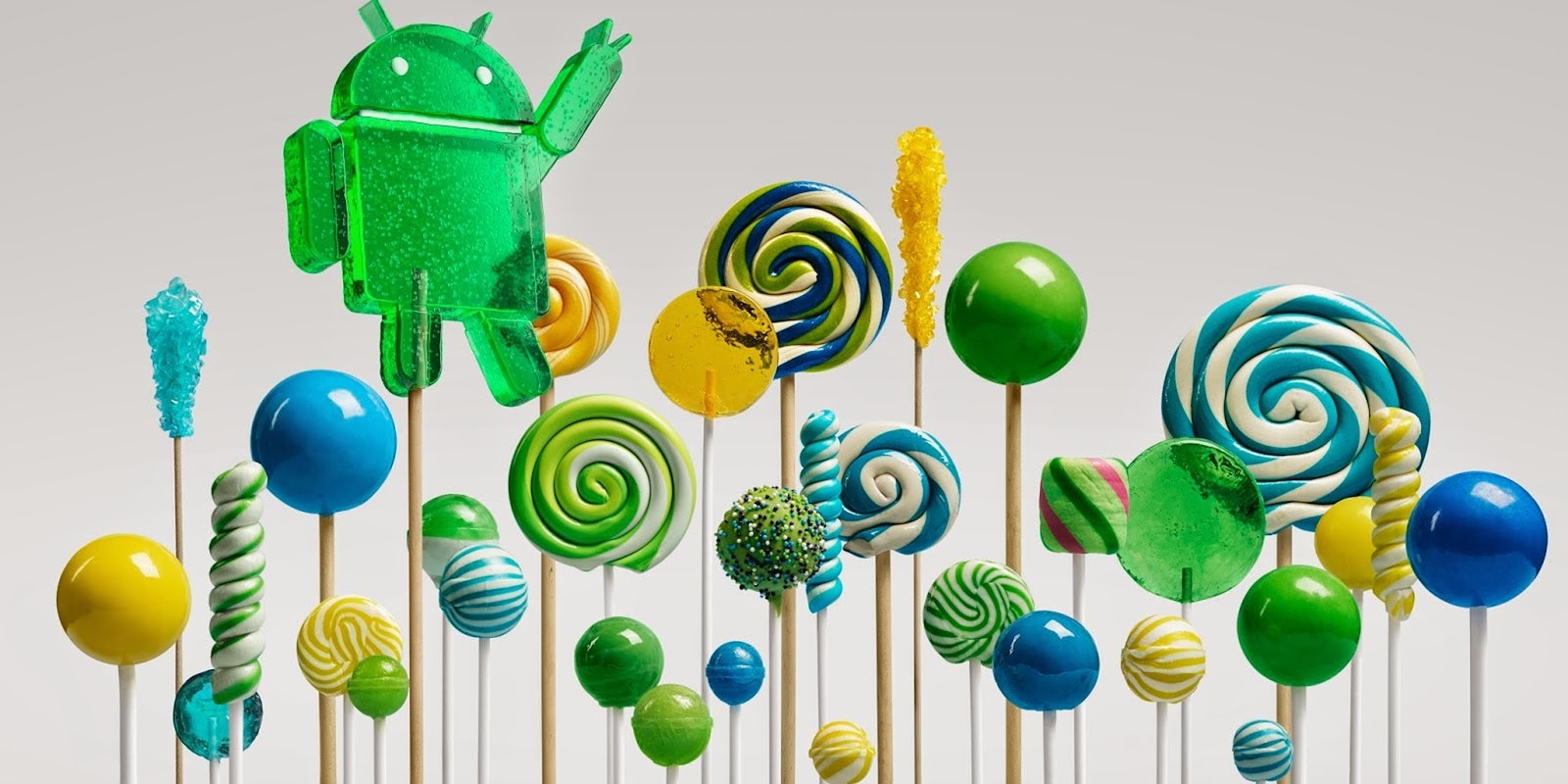Google has finally unveiled Android Lollipop, the next generation of Android that was first shown off back in June as Android L. The company also announced a new line of Nexus products—the Nexus 6, Nexus 9, and Nexus Player—which will be the first devices to take advantage of Android Lollipop.
Android Lollipop (5.0 for those going by numbers) is a significant jump for Android. Lollipop brings a new look to android, called Material Design which is a staunch improvement over the current style of Android.
Fluid animations, improved graphics, and a flatter, cleaner design permeate throughout Android Lollipop, thanks to Material Design. It is easily the best design work Google has ever produced.

Along with the improved visuals comes an impressive slate of new and noticeably improved features. Encryption is now standard on Android Lollipop, to better secure your information. Multitasking has been improved with a new card layout, making it easier to switch between apps.

Notifications have been dramatically improved, now allowing you to respond to messages directly from the lock screen, or hide sensitive information from being displayed. Priority mode gives you the ability to only let certain notifications come through at certain times. Google is even intelligently ranking your notifications in terms of importance in your notification center, to give you access to the most crucial information first.

Lollipop brings a great multiple user feature to Android, something that has yet to be accomplished with any success. You can sign in to any phone running Android Lollipop and see your contacts and access your messages and photos. There is also a guest mode, which will keep your information private if someone needs to use your phone.
One of the best and least talked about features of Android Lollipop is the new battery indicators Google has included: In battery settings, your phone will now tell you how much time you have left before you need to charge your device.
Android Lollipop can also tell you how long you need to leave your phone on the charger before it is fully charged. It gets better: There’s a new battery saving mode that can extend the life of your device by 90 minutes.
If you’re wondering if and when your current device will receive an update to Android Lollipop… unfortunately there isn’t an answer. Companies like Samsung, HTC, and Motorola (which said both of its Moto X devices will get the update) will test the software on their respective devices, and add their customizations before an update is released.
But the first phone to show off Android Lollipop is the Nexus 6. Made by Motorola, the Nexus 6 amounts to a scaled up Moto X. And that’s a good thing, as the Moto X is arguably the best smartphone on the market right now.

With a 5.9-inch Quad HD display, Google is fully embracing the phablet with its latest Nexus phone. The Nexus 6 comes with a 13MP camera, dual front-facing speakers, and Motorola’s Turbo Charger, which will let you charge your battery life enough to last six hours—in 15 minutes.

The Nexus 6 will be available for pre-order on Oct. 29 on Google Play for $649 off contract. The Nexus 6 will be coming to AT&T, T-Mobile, Sprint, U.S. Cellular, and surprisingly Verizon Wireless—which hasn’t carried a Nexus device since 2011—in November.
The Nexus 9 is Google’s latest attempt to ignite some interest in Android tablets. Build by HTC, the Nexus 9 is an 8.9-inch tablet with a lower resolution display than its mobile counterpart.
The 2048 x 1536 display is a good resolution, but nothing to write home about, with Quad HD displays now available on a number of Android phones. The Nexus 9 has your usual gamut of features, a fast 64-bit Tegra K1 processor, 8MP camera, and HTC’s BoomSound.

However, the problem with the Nexus 9—and every other Android tablet—is not the hardware, but the paltry amount of quality tablet apps, a problem that has plagued Android for years.
Retailing for $399, the Nexus 9 is available for pre-order on Oct. 17 on Google Play, and available in Amazon, Best Buy, Gamestop, Office Depot, Office Max, QVC/HSN, Radio Shack, Staples and Walmart on Nov. 3.
But that isn’t the end of the announcements: Google’s challenge to the Apple TV and Fire TV is also here. The Nexus Player is Google’s latest attempt to create a successful TV product. While Google TV didn’t work, the company has had success with its Chromecast lately, and the Nexus Player will build off that.

Already the master of search, Google has built a recommendation engine for Android TV that it hopes will reduce the time you spend looking for something to watch. The round device features your usual slate of apps, including Netflix, Hulu Plus, Pandora, and Crackle.

The Nexus Player will allow you to play games, and Google is offering a gaming controller, which is sold separately.

While Google hasn’t said how much the Nexus Player will cost, the device will be available for pre-order on Oct.17, and go on sale on Nov. 3.
Photos via Google and Motorola


